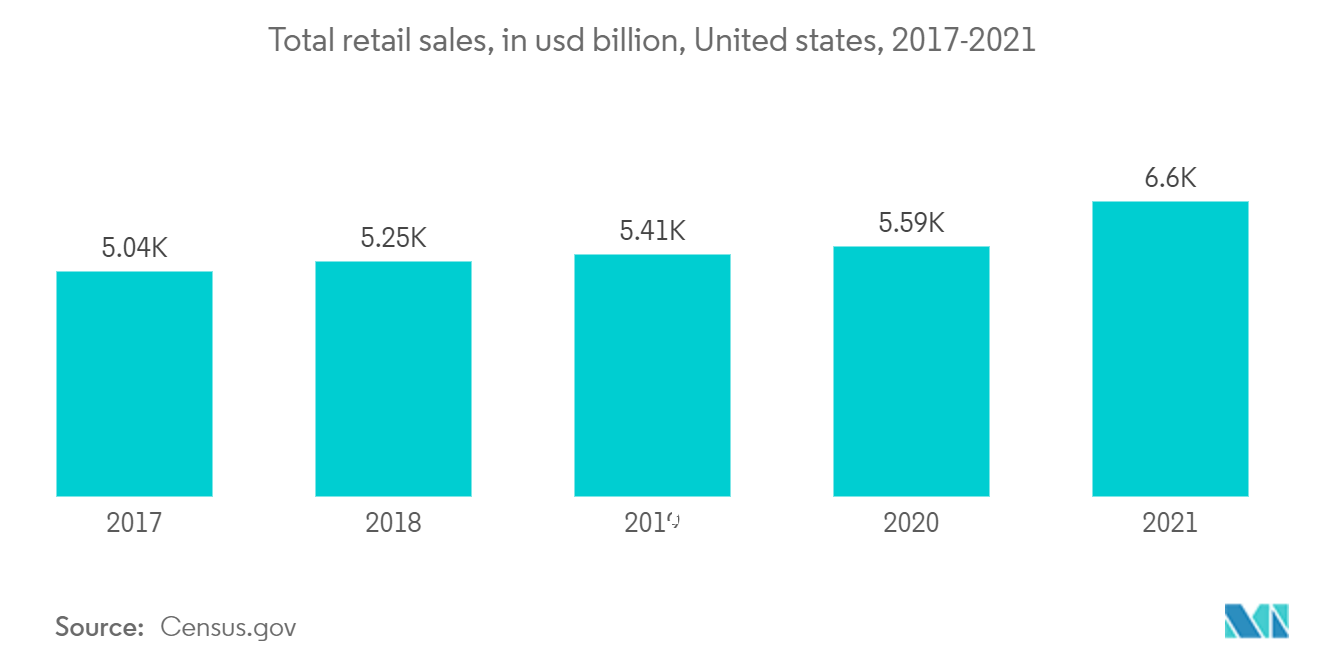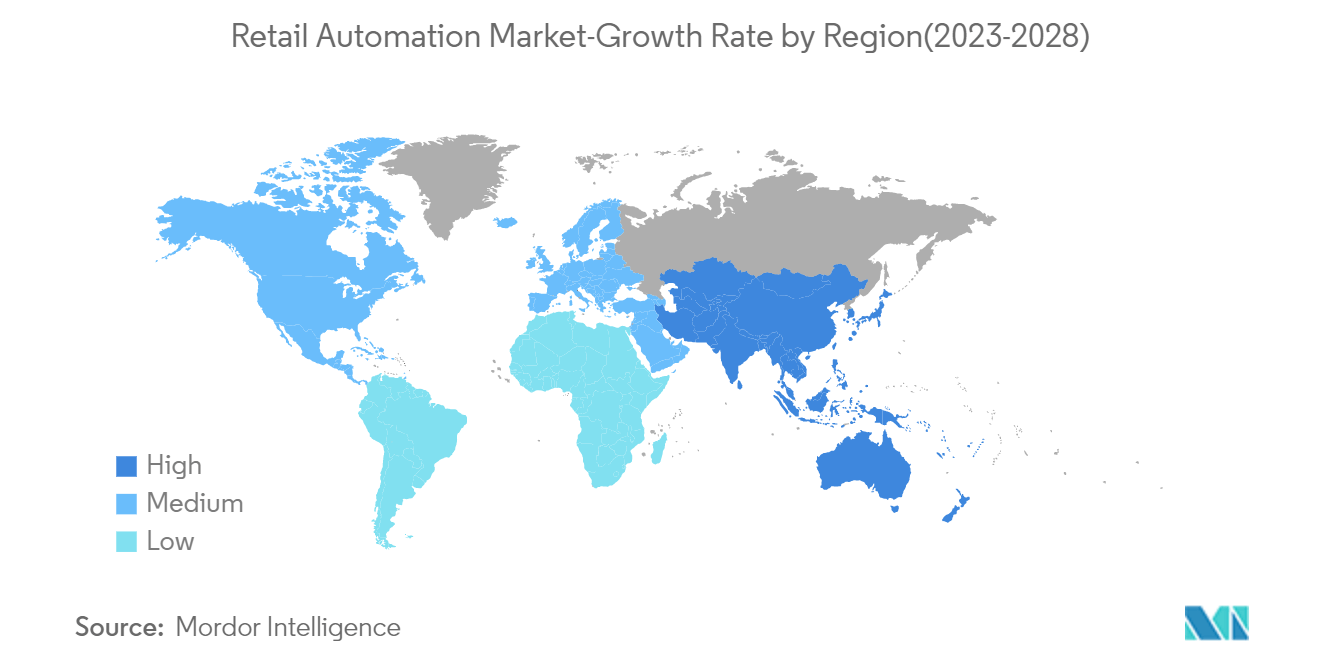Market Trends of Retail Automation Industry
Growth and Competition among Retail Industry and E -commerce
- With the usage of self-checkouts in stores, robotics, and artificial intelligence (AI) in supply chains, the retail industry has made progress in implementing automation. This is primarily a result of increased prices and wages, competitive labor markets, and decreased consumer spending. The sector is presently 40% automated, according to World Economic Forum (WEF) estimates, but over the next three to four years, this number might increase to 60–65%. The renewed focus on automation creates opportunities for logistics, robotics, and retailers.
- The growing strategic developments, such as investments and partnerships in recent years, are analyzed to contribute to the market growth rate significantly. For instance, In October 2022, Bumpa, a Nigerian retail automation platform, raised USD 4 million with Base10 Partners as the lead investor. The company disclosed a USD 200,000 pre-seed investment in September last year, saying it would utilize the money to expand into new African markets, acquire people, and improve its systems and structures.
- In October 2022, Walmart stated that it had acquired Alert Innovation, an e-grocery automation company that creates unique inventory-handling technology. According to the press release, Alert Innovation's Alphabot system uses omnidirectional robots instead of elevators or conveyors to store, retrieve, and dispense orders, freeing up space and making the technology easier to scale. The retail giant announced that it would partner with Alert to "scale their capabilities," noting that the technology will accelerate customer pickup and delivery. The retail giant said the Alphabot technology would enable it to utilize its vast store footprint for storage and fulfillment—4,700 stores located within 10 miles of 90% of the U.S. population.
- Microsoft is bringing together prominent players across all sectors of the retail space to help retailers enhance their delivery solutions to ultimately result in a positive customer experience. In January 2022, FarEye, a global SaaS platform, announced its selection by Microsoft as an Amplification Partner in Microsoft Cloud for Retail. The collaboration empowers and transforms how retailers orchestrate, track, and optimize the movement of goods, enabling enterprises to lower logistics costs while meeting the needs of end consumers.

North America is Expected to Hold Major Share
- The retail market in North America is one of the biggest. Wal-Mart, Costco, Kroger, Home Depot, and Target have their origins in this region. The rapidly growing data volume across in-store operations drives the market’s growth. The retail automation market in the United States is expected to be driven by the growing adoption of automation technologies by major players such as Walmart and Amazon. Part of the adoption is also attributable to changing consumer preferences.
- Further, North America leads the demand for retail cloud solutions. The region has one of the most experimental retail scenarios compared to many other regions. Also, the use of cloud solutions in the region is high in specialty stores. For example, consider Bernhardt Furniture Company Inc., where the company used IBM’s retail cloud solutions to create a mobile sales app and analytics platform that boosted the company's sales by approximately 20% in just ten weeks. Also, the company reported that its executives could engage around 205 more customers during sales events.
- According to the recent survey conducted by CitixsysTechnologies, the prominent vendors of cloud POS solutions (iVendRetail) based in the United States, over 67% of the respondents leave empty-handed from the store because they needed help finding the product they are looking The survey also reveals that over 51% of the respondents turn away from stores due to high waiting times at the POS (Point of service). Such info is very necessary for every retailer, and this is leading to the adoption of cloud solutions.
- In a retail cloud environment, retail businesses and retailers can move their infrastructure resources and business applications to different service architectures of the cloud, such as software as a service (SaaS), to gain a major advantage in terms of speed and agility. In the retail industry, SaaS is anticipated to hold a significant position during the forecast period compared to the other service models, as retailers have an affinity for enhancing customer-facing functionalities.

